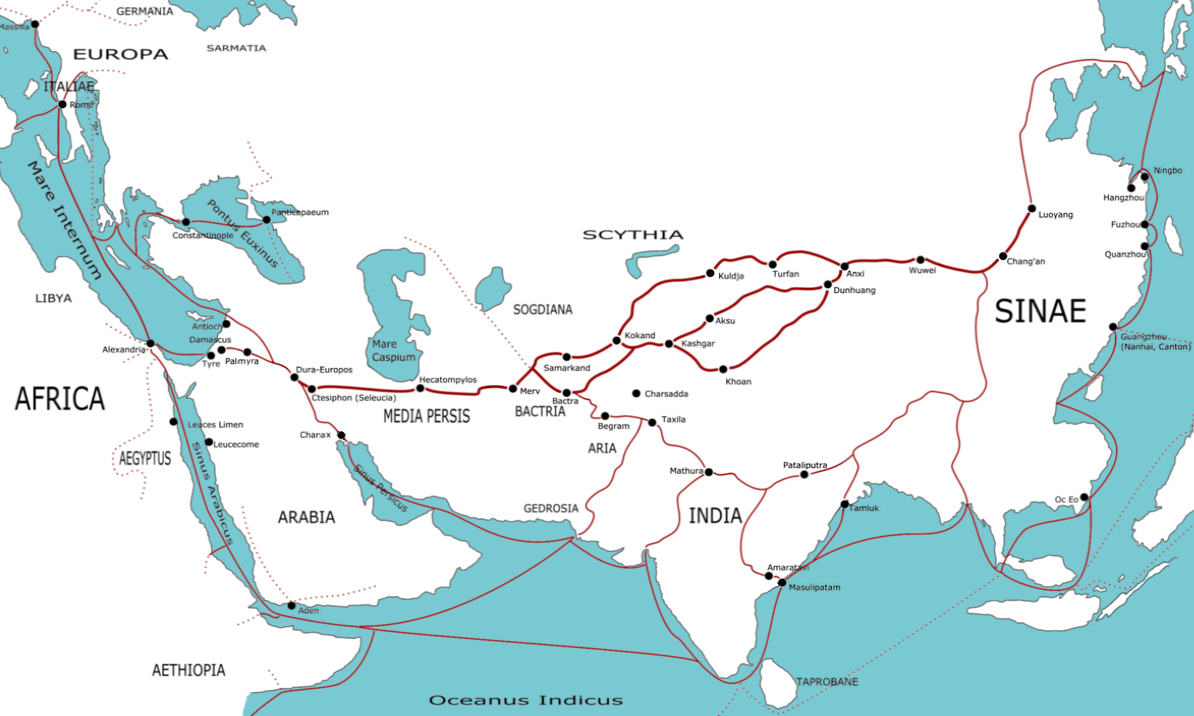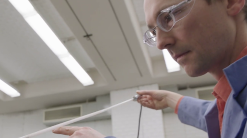Journal Thread #2 / Prompt 1 - On the Road Again
Watch the NIST Role Models explain consensus standards, then go back in time to consider the importance of agreeing on standards.
Teacher Tips!
Many activities have a teacher view and a student view, and teachers can switch between those views by clicking the blue button in the upper-right. Students will not see this option - only teacher accounts see both views. The teacher view will start with overview text, if available, to frame the activity and get you started. This view will also have teacher tips and suggested answers to student questions spread throughout the activity. The teacher text interleaved with student-facing text will be in italics and should appear as a different color on your screen. Teacher tips are designed to help you deliver a learning experience that is best suited for your classroom.
Printing Reminder
Whichever view you see on your screen is what will print. You can print this activity without teacher tips by selecting the student view, or print with teacher tips by switching to teacher view. Simply use the standard print function available for your web browser. No extra steps are required.
Title of Activity:
Journal Thread #2 / Prompt 1 - On the Road Again
Curriculum Collection:
NIST: Universal Constants - Lesson 1
Brief Description:
Students watch the NIST Role Models explain why consensus standards are important. Then, using a historical analogy, students reflect on the use of agreed-upon artifacts for measurement.
Target Grade Level:
Grades 8-12
Discipline or Course:
Physical Science
Time Frame:
One 45-minute session
Suggested Grouping:
Individual
Key Vocabulary:
- Artifact
- Standard
Teacher Prep:
This journal prompt involves a basic discussion of trade using currency vs. trade by barter.
If coins are used for trade, there is the presumption that somewhere there are smiths making the coins, and that the forging of the coins would involve an artifact or standard coin. Savvy traders would have some sense of the size and mass. But coins also could have a “face value” rather than being precisely valued by their mass.
By contrast, using a commodity like silk would involve a measuring instrument (e.g. a cubit of silk). The measuring instruments might not be consistent across different places. Over the vast miles of the Silk Road, the standard would certainly degrade like a long game of “telephone” since there would be no way for a trader in the Middle East to directly and immediately compare their ruler to the standard used in India.
The rubric can be modified for student, whole class, or teacher use.
Possible Rubric
Area |
Novice |
Average |
Advanced |
|---|---|---|---|
|
Constructing Explanations |
No explanation of how an artifact was involved |
Reference to an artifact but no explanation of how it could be used |
Clear explanation of how an artifact could be used |
|
Explanation of potential artifacts in the trading process |
No evidence that the student understands the process or use of an artifact |
Partial evidence that the student understands the process or use of an artifact |
Solid evidence that the student understands the process or use of an artifact |
|
Identification of arguments based on evidence |
No discussion of difficulties or sources of error |
Reference to difficulties or sources of error without explanation |
Clear explanation of how the method might involve sources of error |
STUDENT CONTENT BELOW
Watch the NIST Role Models explain consensus standards.
Think about what the scientists say about the importance of agreeing on standards. Now, go back in time to consider how that occurred in the past.
Over 10,000 years ago, a linked set of roads and trails helped merchants bring goods from China to the Middle East and Europe. The Silk Road was 7,000 miles long, and it brought together a wide range of cultures, languages, and traditions.
The Silk Road was not just a way to make money. It was also an important pathway to exchanging technologies. Knowledge of the magnetic compass, the printing press, the chemistry of gunpowder, ceramics, and even wine-making flowed along with people and goods.
Most of the trades on the Silk Road were made with coins. All gold coins of a certain size were presumed to have the same weight. Some traders bartered silk or spices.
- What was the advantage of using coins over bartering goods?
- What were the disadvantages?
Imagine you are a trader at a Silk Road weigh station 3,000 years ago. Argue that your standard of exchange is accurate to a skeptical potential buyer. What artifacts would be used to make your case?
Remember to argue from the evidence!




